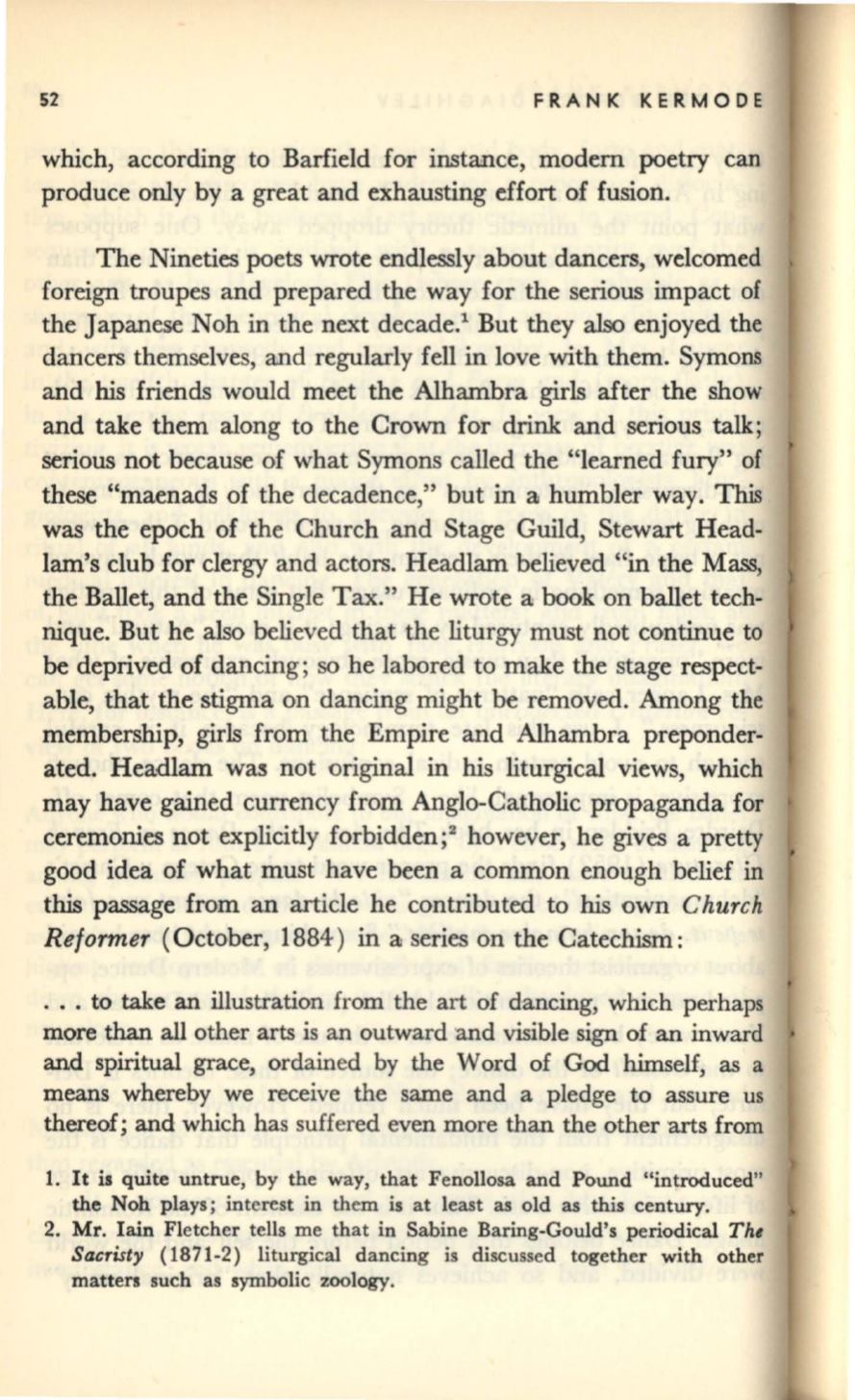
52
FRANK KERMODE
which, according to Barfield for instance, modem poetry can
produce only by a great and exhausting effort of fusion.
The Nineties poets wrote endlessly about dancers, welcomed
foreign troupes and prepared the way for the serious impact of
the Japanese Noh in the next decade.
1
But they
also
enjoyed the
dancers themselves, and regularly fell in love with them. Symons
and his friends would meet the Alhambra girls after the show
and take them along to the Crown for drink and serious talk;
serious not because of what Symons called the "learned fury" of
these "maenads of the decadence," but in a humbler way. This
was the epoch of the Church and Stage Guild, Stewart Head–
lam's club for clergy and actors. Headlam believed "in the Mass,
the Ballet, and the Single Tax." He wrote a book on ballet tech–
nique. But he also believed that the liturgy must not continue to
be deprived of dancing ; so he labored to make the stage respect–
able, that the stigma on dancing might be removed. Among the
membership, girls from the Empire and Alhambra preponder–
ated. Headlam was not original in his liturgical views, which
may have gained currency from Anglo-Catholic propaganda for
ceremonies not explicitly forbidden; 2 however, he gives a pretty
good idea of what must have been a common enough belief in
this passage from an article he contributed to his own
Church
Reformer
(October, 1884) in a series on the Catechism:
... to take an illustration from the art of dancing, which perhaps
more
than
all other arts is an outward and visible sign of an inward
and spiritual grace, ordained by the Word of God himself, as a
means whereby we receive the same and a pledge to assure us
thereof; and which has suffered even more than the other arts from
1.
It is quite untrue, by the way, that Fenollosa and Pound "introduced"
the Noh plays; interest
in
them is at least as old as this century.
2. Mr. lain Fletcher tells me that in Sabine Baring-Gould's periodical
Th,
Sacristy
(1871-2) liturgical dancing is discussed together with other
matters such as symbolic zoology.


